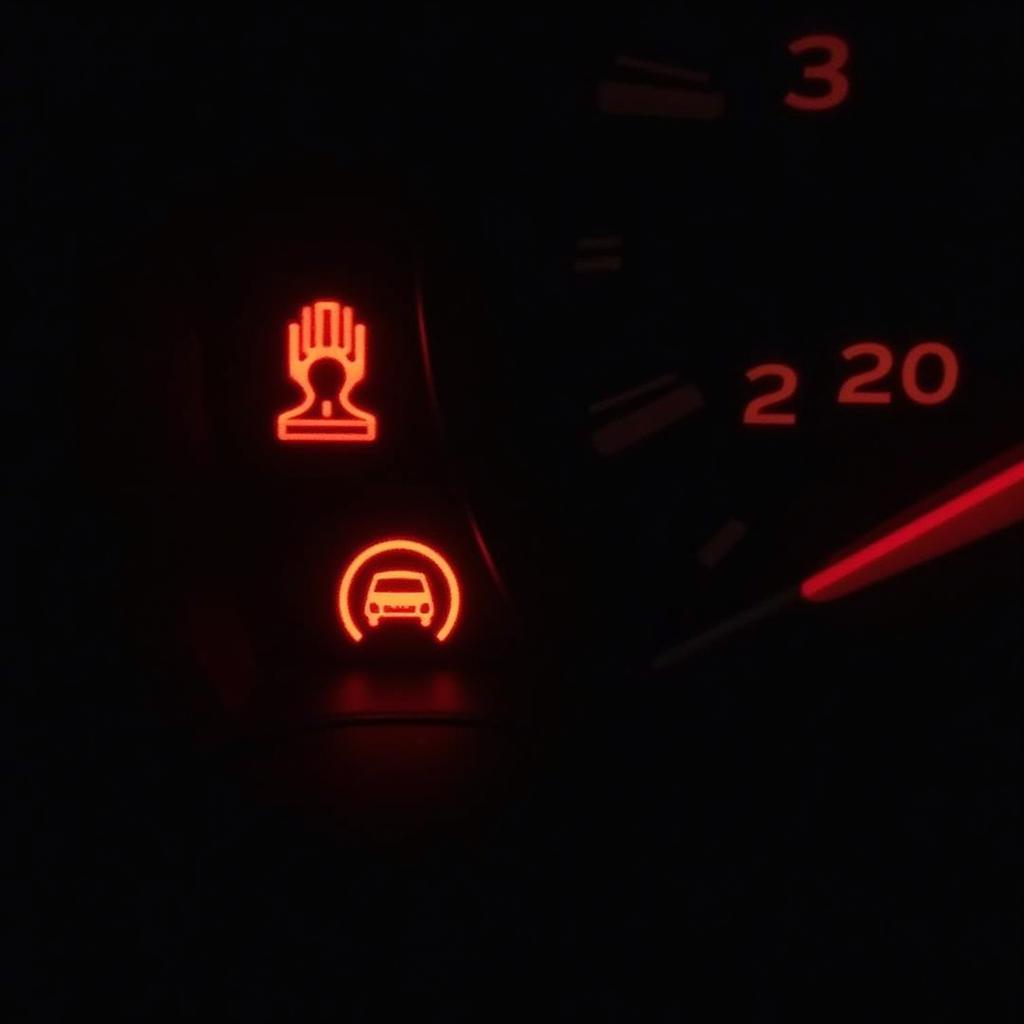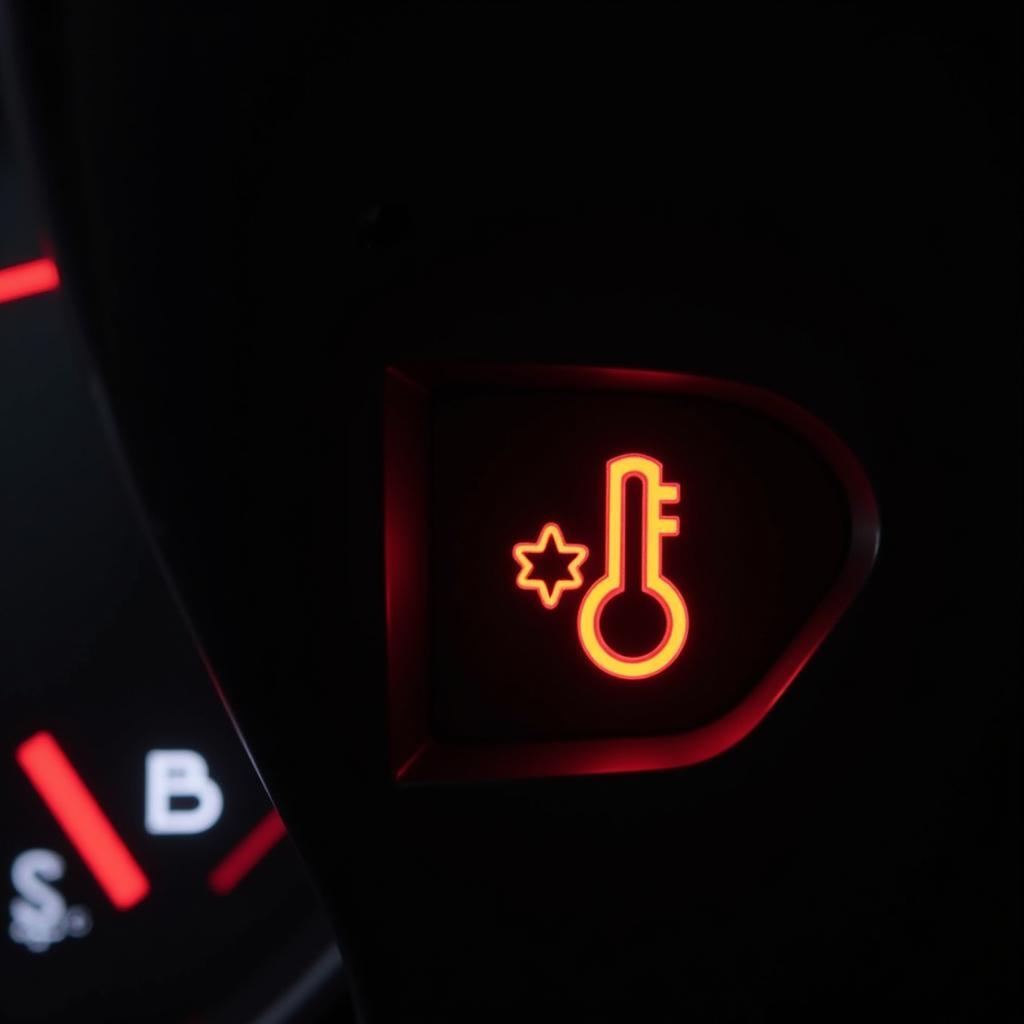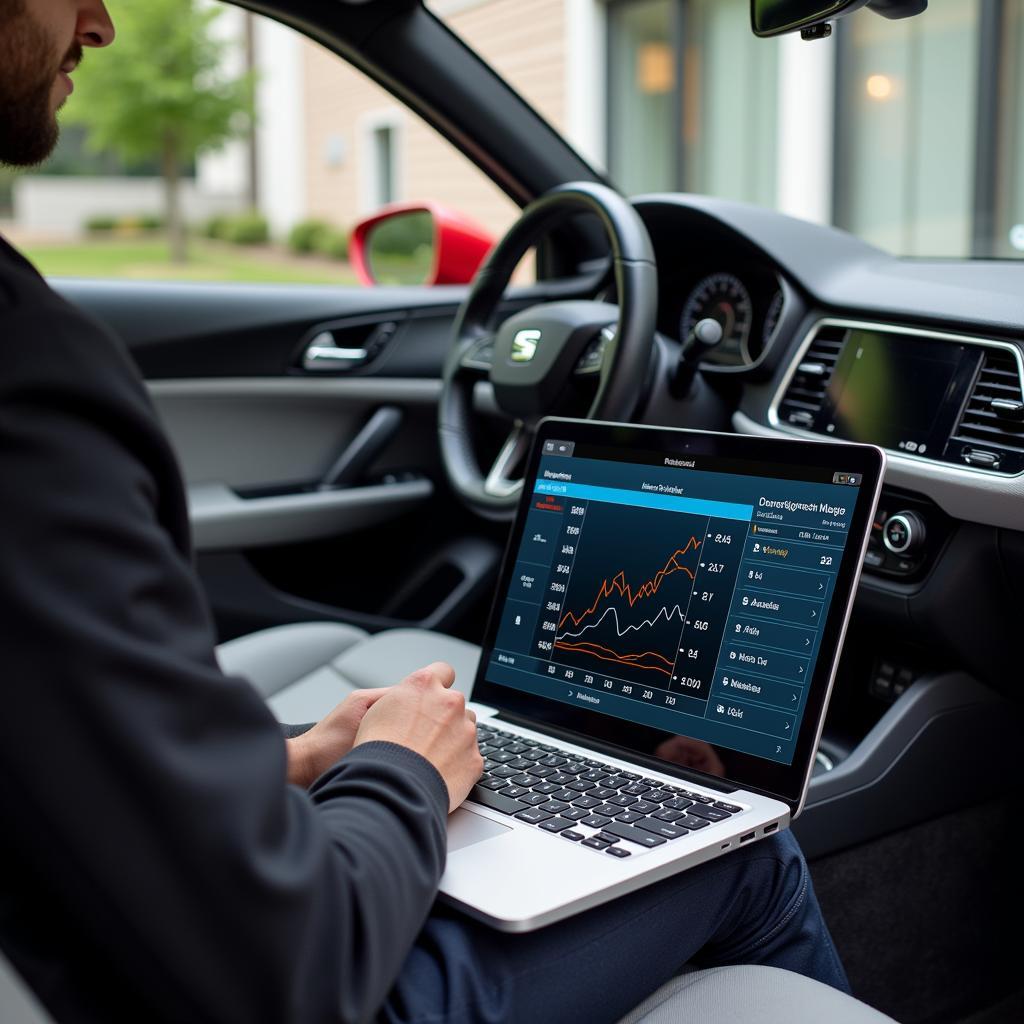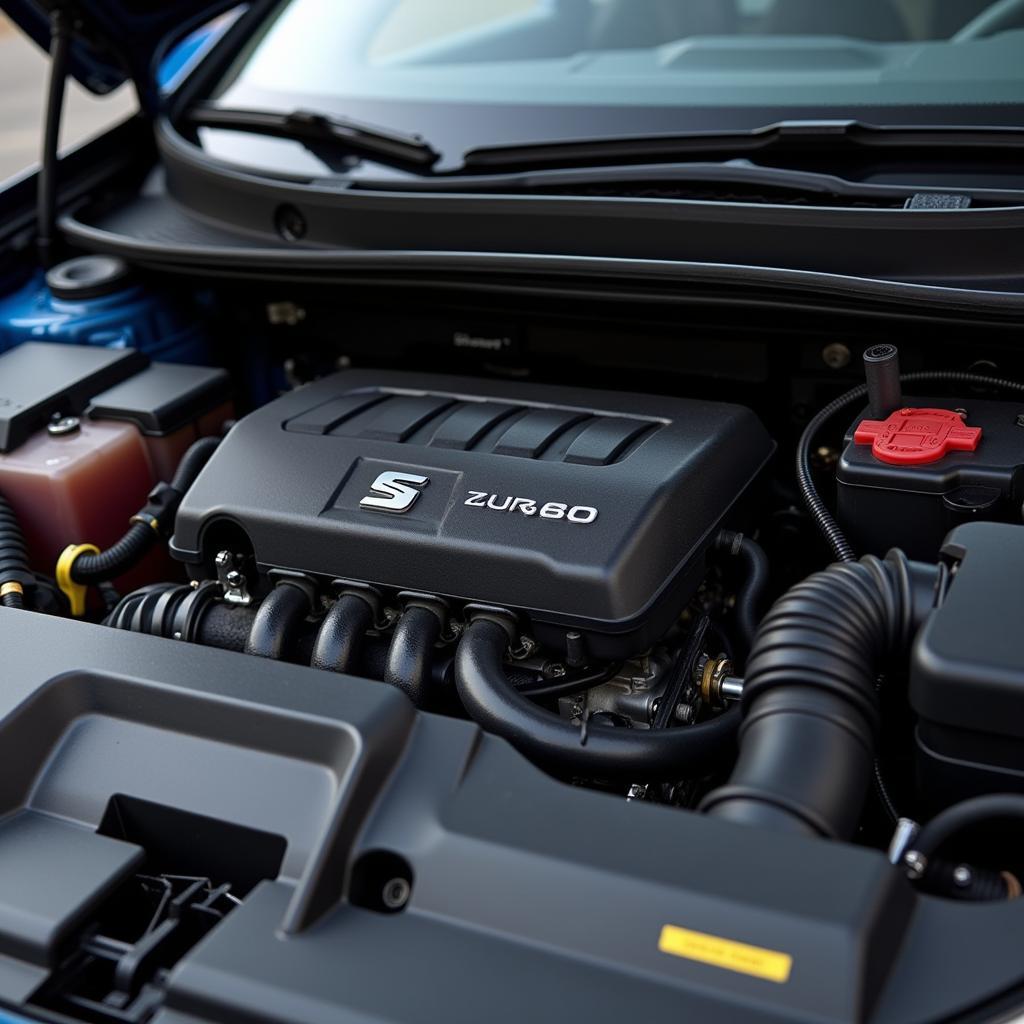Understanding your Seat’s warning light symbols is crucial for safe and efficient driving. These illuminated icons on your dashboard communicate important information about your vehicle’s health and potential issues. Ignoring these warnings can lead to costly repairs or even dangerous driving situations. This comprehensive guide will help you decipher the various seat warning light symbols and empower you to take appropriate action.
Knowing what each light represents allows you to address problems promptly and prevent further damage. This knowledge can save you money on repairs and ensure your safety on the road. Learn about the most common Seat warning light symbols and what to do when they illuminate. seat alhambra warning light symbols provide valuable information for Alhambra owners specifically.
Common Seat Warning Light Symbols and Their Meanings
Seat vehicles, like most modern cars, employ a standardized system of warning lights. However, some symbols might vary slightly depending on the model and year. Here’s a breakdown of some frequently encountered Seat warning light symbols:
-
Red Warning Lights: These indicate serious issues requiring immediate attention. Pull over safely and consult your owner’s manual or contact a qualified mechanic. Examples include the brake system warning light, engine temperature warning light, and oil pressure warning light.
-
Amber/Yellow Warning Lights: These signal less critical issues that require attention but may not necessitate immediate action. Schedule a service appointment soon. Examples include the tire pressure monitoring system (TPMS) light, check engine light, and low fuel light.
-
Green/Blue Warning Lights: These are informational lights indicating a system is active, such as headlights, turn signals, or cruise control.
Deciphering the Brake Warning Light
The brake warning light can indicate several problems, including low brake fluid, a malfunctioning ABS system, or worn brake pads. Ignoring this light can compromise your braking ability, posing a serious safety risk.
 Seat Brake Warning Light Illustration
Seat Brake Warning Light Illustration
Understanding the Engine Temperature Warning Light
An illuminated engine temperature warning light signifies the engine is overheating. This can result from a coolant leak, a faulty thermostat, or a malfunctioning cooling fan. Continued driving with an overheated engine can cause severe damage.
 Seat Engine Temperature Warning Light
Seat Engine Temperature Warning Light
Why is My Seat Airbag Light On?
The airbag warning light illuminates if there’s a problem with the Supplemental Restraint System (SRS). This could be due to a faulty sensor, damaged wiring, or a deployed airbag. A malfunctioning SRS can compromise safety in a collision.
What to Do When a Warning Light Appears
When a warning light appears, consult your owner’s manual for specific instructions related to your Seat model. If a red warning light illuminates, pull over safely as soon as possible. For amber/yellow lights, schedule a service appointment promptly. seat altea warning light symbols offer specific guidance for Altea owners.
“Ignoring warning lights is like ignoring a doctor’s advice,” says automotive expert, Dr. Amelia Carter, “It’s crucial to address them promptly to avoid potentially serious and costly problems down the road.”
Remote Diagnostics and Software Solutions
Modern technology allows for remote diagnostics and software updates that can sometimes resolve warning light issues without a physical visit to the mechanic. These services can offer convenient solutions for certain software-related problems. For issues with your Seat’s dashboard warnings, you can find helpful resources on seat dash warning lights.
 Remote Diagnostics for Seat Vehicles
Remote Diagnostics for Seat Vehicles
“Remote diagnostics have revolutionized the way we diagnose and repair vehicles,” adds Carter, “It allows us to quickly identify and address many issues, saving time and money for the vehicle owner.” Specifically, if you’re experiencing a focus st low brake fluid warning, checking focus st low brake fluid warning might provide helpful insights. Knowing your car warning light symbols seat will help you communicate effectively with technicians.
Conclusion
Understanding your Seat warning light symbols is paramount for ensuring your safety and maintaining your vehicle’s health. By recognizing these symbols and taking appropriate action, you can prevent minor issues from escalating into major problems. Don’t ignore those warning lights – they are there to help you!
FAQ
- What should I do if a red warning light comes on? Pull over safely as soon as possible and consult your owner’s manual or a qualified mechanic.
- What does the check engine light mean? It indicates a potential issue with the engine or emissions system.
- Can I ignore an amber warning light? While not as urgent as red lights, amber lights should be addressed promptly to prevent potential problems.
- How often should I check my tire pressure? Regularly, at least once a month, and before long trips.
- What does the TPMS light indicate? It signifies low tire pressure.
- Where can I find specific information about my Seat’s warning lights? Your owner’s manual is the best resource for model-specific information.
- How can remote diagnostics help with warning light issues? They can identify software-related problems and potentially resolve them remotely, saving you a trip to the mechanic.

